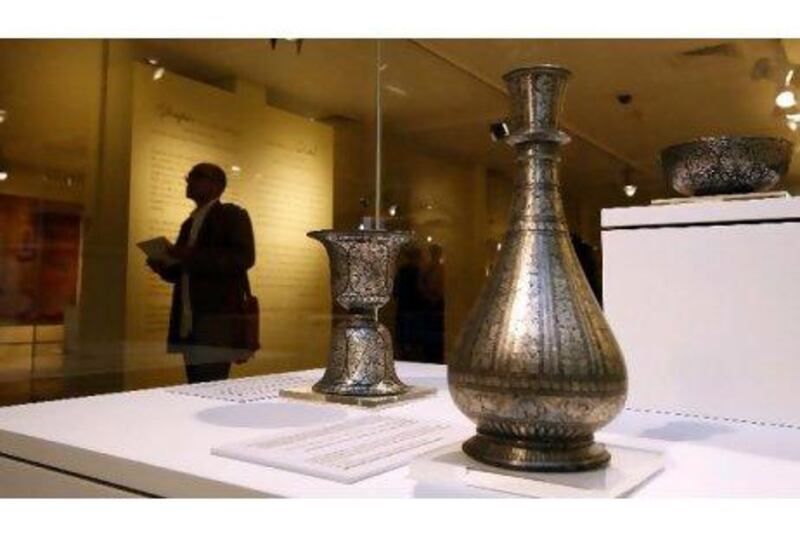Sharjah // Cases from one of India's largest museums have been unlocked and shipped to the UAE after they were allowed to leave their homeland for the first time.
Treasures dating back to 13th century were shown outside India at the Sharjah Museum of Islamic Civilisation, which opened the exhibit yesterday.
Preparations have been underway since February, when Indian authorities allowed Sharjah's museums department to select artefacts collected by the Salar Jung family, who served as prime ministers to the royals of Hyderabad state.
The "Glimpses of Courtly Splendour" exhibition, which runs until February 10, aims to provide insight into the sophisticated public and private lifestyles that prevailed at the royal courts of Hyderabad, and introduce personalities from Indian history to art lovers in the country.
"The Salar Jung Museum has a great collection of items with strong artistic value," said Aisha Rashid Deemas, the Sharjah museum's curator. "With such a big Indian population in the UAE, we were looking towards working with India to provide our visitors with something of direct relevance for a long time now.
"Because the Emirates has such strong relations with India, we felt we had to bring the exhibition here."
The Indian Embassy helped with the collaboration to bring the artefacts to the Emirates. The display is divided into three main sections including: official life at the palace; faith and devotion; and private life in the palace.
"The idea was to show the various cultural influences in the country at different times," Ms Deemas said. "There are artefacts that illustrate their relations with Europe, like how they were manufacturing porcelain for the Indian market. We are trying to give visitors a wide range of experiences from that part of the world."
The museum in India hosts the collection of three generations of the Salar Jung family. Mir Turab Ali Khan, also known as Salar Jung I, began the collection around 1884 and it was completed in 1949 with the largest investment made by Mir Yousuf Ali Khan, or Salar Jung III. After his death, more than 48,000 articles were handed over by the family to the government of India, which appointed a committee to act as custodians.
Nawab Ahtheram Ali Khan, a member of the Salar Jung family and of the committee, said the museum had a policy that prevented articles from being exhibited outside the country, which was changed to allow others to enjoy them. "We realised that unless it was taken out nobody would know what it holds," he said. "We amended the policy so that the articles could be used to educate people about our art."
MK Lokesh, the Indian Ambassador to the UAE, said the event was part of a series meant to showcase the cultural ties between the Emirates and India. Additional collaborations are planned for the coming year.
"Through this we want to highlight our cultural proximity and historical links with the region," Mr Lokesh said. "Sharjah is the cultural capital of the region, which makes it the best place to showcase these artefacts."
The exhibition celebrated the artistic legacy of Islamic Hyderabad and underscored the cultural influences of the Islamic world on Indian art, said Manal Ataya, the Sharjah museums department director general.
The exhibit's faith and devotion section includes Qurans dating from the 12th century, and some of the few remaining examples of Kufic calligraphic script on parchment in the world. Also on display is one of the deep-blue, blown-glass sprinklers for holding scents that Salar Jung I was known to offer his guests as parting gifts.
Ms Deemas said a patchwork shawl, the largest object in the exhibition, was likely to be a favourite among art lovers.






